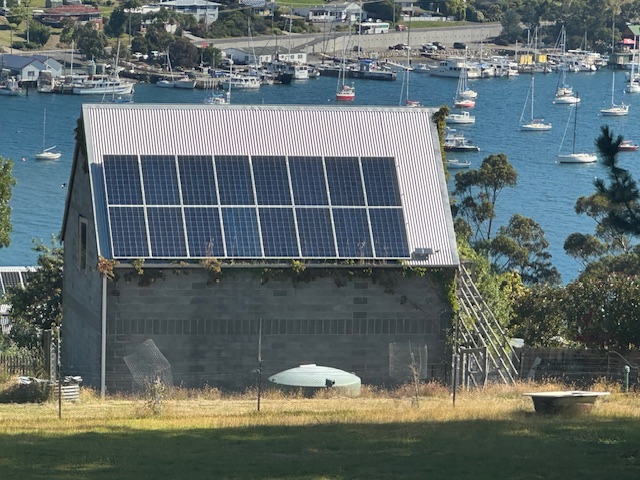In a competition on efficiency between electric homes with rooftop solar and gas-powered households, there is really no contest. According to a detailed survey by the Australian Energy Market Operator, electric homes are far more efficient, and even their overall draw down from the grid is little different.
Still, in some states, particularly in winter, the draw down from the grid for electric heating can happen at times of peak demand, so household batteries will play a key role in managing that surge, which explains why the federal government is spending at least $2.3 billion on the rollout its household battery plan.
The findings by the AEMO survey – which compared metered electricity and gas consumption data from households in all states and territories, and across all seasons – is critical to the planning for a grid preparing for the exit of the last coal fired power stations, and their replacement by wind, solar, storage, and firming capacity.
The transition is not just happening somewhere far away: The availability of cost competitive rooftop PV, battery storage, and electric vehicles to home owners, and the smart inverters and software that can help orchestrate their use signals a fundamental transformation in the electricity grid and the way power is produced and shared.
Fossil gas appliances are now recognised for what they are – expensive to run, highly polluting, and harmful to health. The electrification of homes and business means that – within a decade – more than half of consumer electricity demand may be met by their own, or other, distributed resources.

Already, in state’s like South Australia, where half of standalone homes have rooftop solar, the output of rooftop PV more than matches overall grid demand, forcing a significant change in the way the grid is managed.
The survey conducted by AEMO is designed specifically to inform government policy, and help in the development of its own planning documents, mostly the Integrated System Plan, where consumer energy resources, or CER (some prefer distributed energy resources, or DER) is now a major input.
The report, quietly released in April, in the midst of the federal election campaign, found the biggest savings could be found in Victoria, which also explains its often criticised push to encourage homes to move away from gas, and go electric.
“Stand-alone houses in Melbourne and Geelong with electric heating, electric hot water and rooftop solar were found to use approximately 54 gigajoules (GJ) less gas and import just 0.1 megawatt hour (MWh) more electricity from the grid per year compared to houses with gas heating, gas hot water and no solar,” the report says.
These electric homes, with solar, also export an average 3.8 MWh back to the grid. And the reduction in gas use is even more significant for older homes, with houses constructed prior to 2005 with gas heating and hot water typically consuming around 30 per cent more gas than new houses with gas heating and hot water.
In milder climates, the reduction in gas consumption is less pronounced, but the analysis of metered data from houses in Sydney, Newcastle and Wollongong found that electric homes were still found to use an average of 23 GJ less gas per year compared to homes reliant on gas for heating and hot water.
In addition, houses with electric heating, electric hot water and rooftop solar imported an average of 0.6 MWh less electricity from the grid than those with similar electric devices without PV, as well as exporting an additional 5 MWh back to the grid per year.
The report hastens to add that the results are not homogenous because dwelling size and design and consumer create substantial variations across households. But the transition to electric heating, hot water and rooftop solar significantly alters daily electricity demand patterns.
Homes with electric heating exhibit more pronounced peaks in electricity imports during colder months, particularly in the morning and evening hours, and this is particularly so on the coldest days. In Victoria, it means that demand peaks may shift from summer to winter.
And in winter, homes with rooftop solar exhibit a sharp surge in demand as they transition from being net exporters during the day to significant importers during the evening peak.
“This highlights the importance of home energy storage and advanced load-shifting technologies to balance peaks and troughs in demand and reduce ramping pressures on the grid,” the report says.
“Homes with solar tend to exhibit higher evening peak demand than those without. This behaviour could reflect a tendency for households with solar to increase electricity usage due to perceived cost savings from self-generation (referred to as the solar rebound effect, and a feature of AEMO’s demand forecasting methodology).
” Ramping requirements for this cohort are extreme, as high solar exports quickly transition to steep evening peak demand.
“These patterns underscore the importance of integrating home storage solutions and advanced load-shifting technologies, such as smart EV charging and automated energy management systems, to balance peaks and troughs in demand and reduce ramping pressures on the grid.”

One interesting set of graphs focus on the ACT, hot in summer and cold in winter, and which has a program to eliminate fossil fuels as part of its 2045 net zero targets and which already bans new residential gas installations.
The graphs above compare 2023 consumption profiles for older houses (connected before 2005) and newer houses (connected between 2020 and 2022).
It shows that the gas heating load has almost been eliminated in newer houses, with electricity replacing it as the dominant heating source.
“Interestingly, the quantity of electricity imported from the grid has only increased marginally, due to a combination of increased rooftop solar penetration and system size, and higher energy performance,” the report notes.
See also: How electricity meters distort the role of rooftop solar generation








